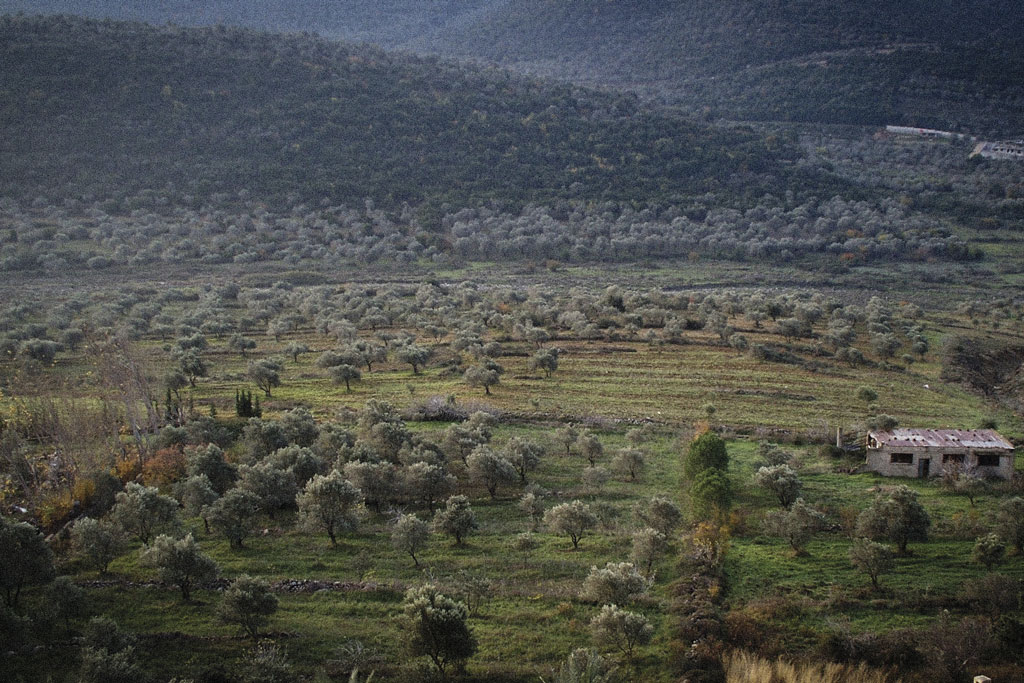What after ISIS? Consequences for the West
By Dimitris Raftogiannis
The fight against ISIS in Syria and Iraq is continuing resulting in big loses for the terrorist organization. It loses territory, strongholds and hundreds of its fighters. The fight for Mosul is over with ISIS forces suffering heavy casualties. At the same time the offensive against Raqqa, its capital city, continues. The loss of Raqqa to alliance forces will be a major blow to likely determine the future of the so called caliphate. The caliphate is being crushed but its collapse will have serious consequences for the West as its fighters will travel to western countries as well as unstable regions to continue jihad one way or another.
Some months ago the former FBI Director James Comey acknowledged “the caliphate will be crushed…” and the result “will be a terrorist diaspora sometime in the next two to five years like we’ve never seen before.”
 Who are the terrorists that will be dispersed all over the world?
Who are the terrorists that will be dispersed all over the world?
It is mainly foreign fighters who travelled from more than 80 countries to join the battle in Syria and Iraq under the ISIS banner. After ISIS collapses most of them will leave the region to continue the jihad participating in wars elsewhere or conducting terrorist attacks mainly in western countries.
Today, they are estimated to be around 30000. For comparison reasons it is reminded here that during the Soviet – Afghan conflict in the 1980s the foreign fighters’ estimated number was 5000 to 20000. After the Afghan war was over it was those fighters who formed al-Qaeda and later fought in Algeria, Bosnia and Herzegovina and even Chechnya. The foreign fighters to emerge from the conflict in Syria and Iraq will act in a more or less same way wishing to leave behind a similar legacy.
6000 out of the estimated 30000 foreign fighters who currently participate in the conflict in Syria and Iraq under ISIS flag come from western countries, mainly France, Germany, the UK and Belgium. These 6000 pose a deadly threat for the West as most of them will want to return to their home countries after the conclusion of the fight. And it is anticipated they will use their expertise and skills to recruit and organize terrorist attacks. Even if the so called caliphate is dissolute it will continue to be a reference point for all Islamic extremists and jihadists as it will remain alive in the form of a virtual caliphate in the internet and its message will persist through social media thus inspiring Islamic fundamentalism worldwide.
What the foreign fighters are going to do after the caliphate collapses in Syria and Iraq?
Some of them will remain in the area joining the next Salafist – jihadist group that emerges, whatever this is. For some others, loyal to both ISIS and al-Qaeda, joining al-Qaeda will be the strongest option, if not the only option.
Yet, another group of foreign fighters will travel abroad to continue the jihad in unstable and barely governed countries like Afghanistan, Yemen, Libya and regions like West Africa or Caucasus.
But the most dangerous and threatening group for the West is the foreign fighters – citizens of western states – returning to their home countries. Upon their return they will try to radicalize more youth, recruit new members, re activate dormant or create new networks and plan, organize and execute terrorist attacks. The grave threat that this group of fighters pose for western countries is more than obvious. It is worth reminding that the Bataclan theatre attack in Paris in 2015 was planned and conducted by foreign fighters who received training in Syria. According to secret services estimates hundreds of them are already back in their home countries while thousands more are expected to attempt to infiltrate the western societies in the near future, especially as ISIS condition deteriorates.
Can they be stopped in the borders of Europe?
This is a question that has neither accurate nor obvious answer. Europe has to wisely allocate its resources to detect, track, monitor and surveil hundreds of jihadists who try to sneak in Europe– a daunting job even if everything worked fine. But difficulties in information sharing among secret services and other governmental entities, lack of coordination of law enforcement forces among the states and even political disputes on how to address the issue makes the effort less efficient. The matters are even worse because Europe is already vulnerable to the terrorist threat for reasons currently beyond control, namely close distance from war theatre, the big number of foreign fighters that are European citizens – nearly 6000 – the limited anti-terrorism capabilities and the big Muslim communities that live in European countries.
Is it only ISIS and its foreign fighters that pose a threat for Europe and the West?
The answer is no. Al – Qaeda is still there and it persists despite the challenges. Since 1988 when it was found in Afghanistan the organization has gone through major setbacks and serious blows but was always able to recover. Its operational capabilities to conduct attacks against the West peaked in the period 1998 – 2005. Some of the more spectacular of them during this period were the Twin Towers attacks, Madrid subway attack, the USA embassies attacks in Nairobi and Dar es Salaam, the attack against USS Cole, the attacks in London, Istanbul, Jakarta, Riyadh and Casablanca. They left behind thousands of dead and injured people and the world watching in terror. After the charismatic leader of al – Qaeda Osama bin Laden was killed by US Special Forces in 2011 the organization started to seriously weaken and unravel.
Today, under the leadership of al-Zawahiri is not in the forefront of the jihad as ISIS has taken the lead some years now. However, many scholars and experts believe that since al Zawahiri took over in 2011 al –Qaeda has adopted a quiet and low profile strategy thus has significantly increased its strength and has expanded its reach and influence in a wide area covering Algeria, Libya and Tunisia in the West to as far as Yemen, Afghanistan, Pakistan, Bangladesh and even Maldives in the East. Al –Qaeda is currently waiting for developments related to ISIS to unfold, namely ISIS to collapse, to decide next steps. There are already some developments observed lately in its leadership where the son of Osama bin Laden, Hamza, is promoted by other top commanders of the organization. This seems an indication of leadership change that is about to take place, maybe ahead of ISIS collapse or a possible merger of al – Qaeda and ISIS. This possible merger might be the most dangerous development after a grievous blow on ISIS. Is extremely concerning in the sense that it will allow al-Qaeda to exert control over ISIS networks in Europe which will maximise its power and influence over salafi – jihadist individuals residing in western countries.
It is believed that exactly the collapse of ISIS will be the triggering event for al-Qaeda’s revitalization and total comeback as the organization will become the most appealing option for many of the fighters to continue the jihad. If eventually the charismatic Hamza bin Laden becomes its next leader, then many more fighters will join al-Qaeda and public support in the Muslim world will surge. Moreover, if the West overreacts to terrorist attacks in western countries by imposing measures against Muslims thus enhancing the perception of a “war against Islam” al-Qaeda will surely take advantage of the opportunity to increase its influence in the Muslim world by punishing the non-believers waging jihad against them.
Conclusion
The ISIS collapse in Syria and Iraq will generate new threats for the West, a long period of uncertainty and increased terrorist activity worldwide because:
1. the foreign fighters now fighting with ISIS, will return to their countries of origin especially in western Europe, where they will want to continue their fight against the non-believers. This time they are battle hardened and experienced.
2. re appearance of al-Qaeda as ISIS successor or a al-Qaeda – ISIS merger. There could also be a mix of Islamic groups with al-Qaeda as the principal. To inspire, increase its influence and gain support in the Muslim world the organization will instruct terrorist attacks against the West and western targets all over the world especially if it takes control of the ISIS network in Europe.
In May 26, 2017 the Department of Homeland Security Chief, four star Army General John Kelly told Fox News: “ if you knew what I know about terrorism you’d never leave the house in the morning.”
Although it might not be all that bad we should always be prepared for every eventuality on all levels of our social life.
1. Comey Warns of Post-ISIL Terrorist Diaspora, Politico, 27 September 2016
2. Foreign Fighters: an updated assessment on the flow of foreign fighters into Syria and Iraq, The Soufan Group, 8 December 2015
3. Foreign Fighters: an updated assessment on the flow of foreign fighters into Syria and Iraq, The Soufan Group, 8 December 2015
. Where Do ISIS Fighters Go When the Caliphate Falls? The Atlantic, 6 March 2017
5. Prof. Bruce Hoffman “Al Qaeda: Quietly and Patiently Rebuilding”, The Cipher Brief, 30 December 2016
6. Prof. Bruce Hoffman “Al Qaeda: Quietly and Patiently Rebuilding”, The Cipher Brief, 30 December 2016
7. Prof. Bruce Hoffman “The Coming al Qaeda – ISIS Merger”, Foreign Affairs, 29 March 2016
8. Tim Marcin “Terrorism in America”, Newsweek, 26 May 2017, http://www.newsweek.com/terrorism-america-knew-what-i-knew-youd-never-leave-house-kelly-dhs-616317
